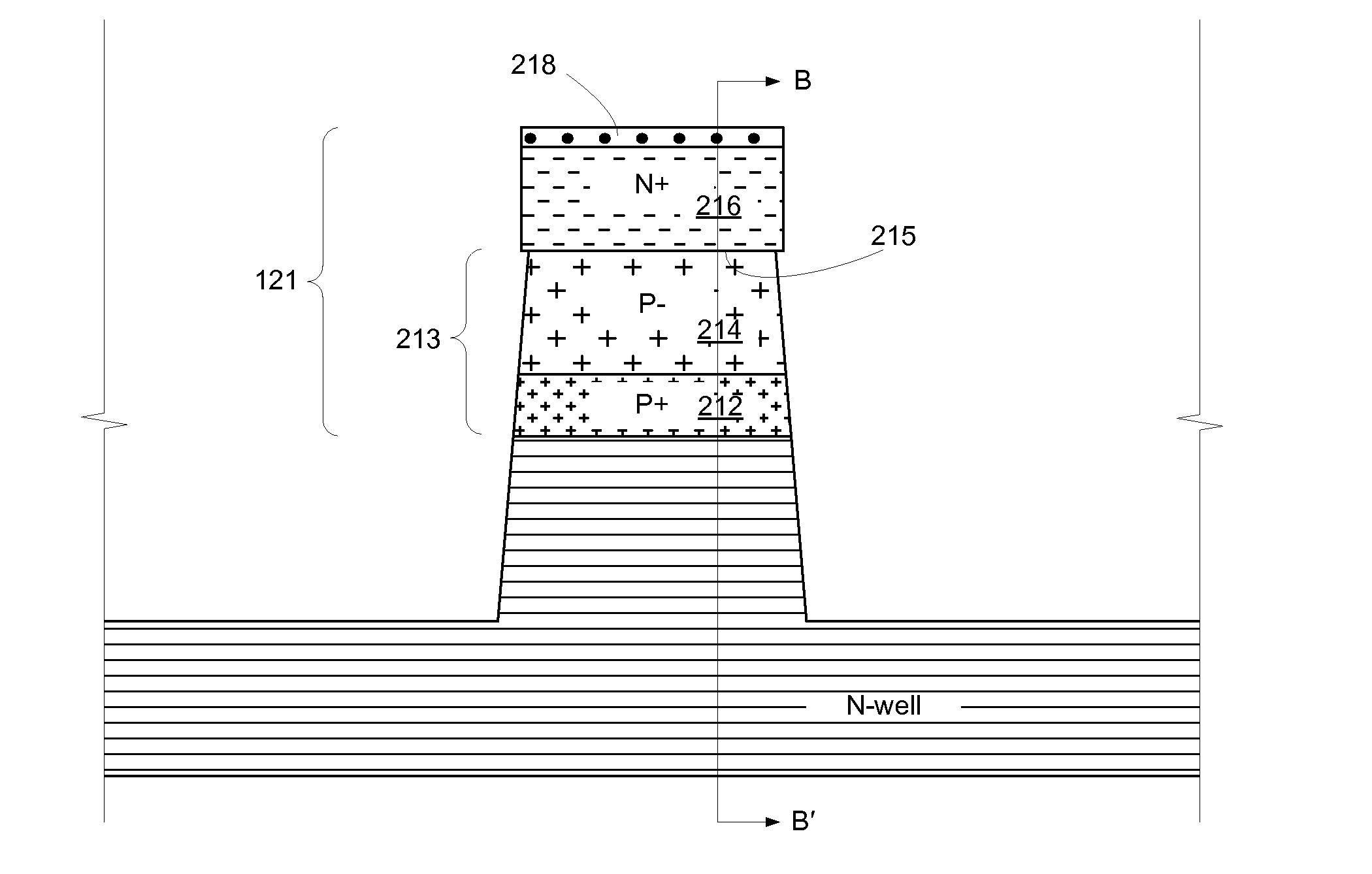Memory cell access device having a pn-junction with polycrystalline and single-crystal semiconductor regions
a memory cell and polycrystalline technology, applied in the direction of bulk negative resistance effect devices, solid-state devices, instruments, etc., can solve the problems of unacceptably high off-current of diodes having both regions made of doped polysilicon, difficult bipolar junction transistors with cmos peripheral circuitry, and high design and manufacturing processes. achieve the effect of enhancing the performance of the diodes, preventing the diffusion of dopants, and saving substantial manufacturing costs
- Summary
- Abstract
- Description
- Claims
- Application Information
AI Technical Summary
Benefits of technology
Problems solved by technology
Method used
Image
Examples
Embodiment Construction
[0056]The invention will now be described in further detail by reference to the drawings, which illustrate alternative specific embodiments and methods. The drawings are diagrammatic, showing features of the embodiments and their relation to other features and structures, and are not made to scale. For improved clarity of presentation, in the figures illustrating various embodiments, elements corresponding to elements shown in other drawings are not all particularly renumbered, although they are all readily identifiable in all the figures. Also for clarity of presentation certain features are not shown in the figures, where not necessary for an understanding of the invention. It is to be understood that there is no intention to limit the invention to the specifically disclosed embodiments and methods but that the invention may be practiced using other features, elements, methods and embodiments. Preferred embodiments are described to illustrate the present invention, not to limit it...
PUM
 Login to View More
Login to View More Abstract
Description
Claims
Application Information
 Login to View More
Login to View More - R&D
- Intellectual Property
- Life Sciences
- Materials
- Tech Scout
- Unparalleled Data Quality
- Higher Quality Content
- 60% Fewer Hallucinations
Browse by: Latest US Patents, China's latest patents, Technical Efficacy Thesaurus, Application Domain, Technology Topic, Popular Technical Reports.
© 2025 PatSnap. All rights reserved.Legal|Privacy policy|Modern Slavery Act Transparency Statement|Sitemap|About US| Contact US: help@patsnap.com



